CDU personalizes plastic surgery by offering customized procedures that result in a beautiful, natural look.
Eyes are not only functional. They can determine first impressions when meeting people, so small changes can make a big difference. Consequently, double eyelid surgery in Korea has become the most commonly performed plastic surgery. People tend to think that double eyelid surgery is a simple procedure but, depending on the chosen procedure and the surgeon’s clinical experience, results can vary greatly.
Therefore, it is recommended that those who are considering double eyelid surgery in Korea, consider the delicate nature of the surgery and the need for an accurate diagnosis. Once this is taken into consideration, a customized procedure may be chosen based on one’s own condition and the surgeon’s clinical opinion.
Surgery Duration
30 - 60 min
Hospitalization
No
Stitches Removal
After 3-7 Days
Anesthesia
Local or Sedation
Recovery Period
7 Days
CDU Double Eyelid Surgery

People’s eye shape differs according their overall facial structure, balance, etc. but to have beautiful eyes, harmony with one’s face is the most important factor. CDU Plastic Surgery Korea creates beautiful faces with natural eye shapes and, thanks to CDU’s expertise, you needn’t worry about recurrence or the possibility of scars.
Quick & 9-Lock non-incision method
- The best method for permanent folds
- This method is a surgical procedure suitable for people with thin eyelids, less fat, or wrinkles.
- There are rarely any incisions made during the procedure, but 3-9 micro holes are made on the upper eyelid and the eyelid creases are created with buried sutures.
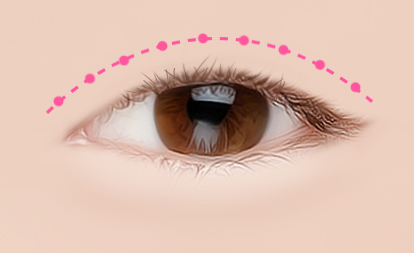
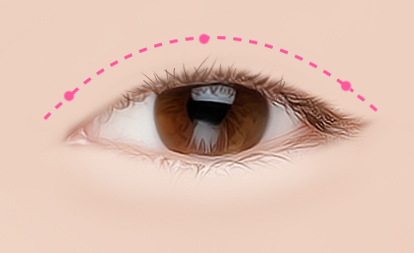
Recommended for:
No excessive fat or droopy eyelids
Natural-looking eyelids
No incisions in the skin
No scarring
Fast recovery
-
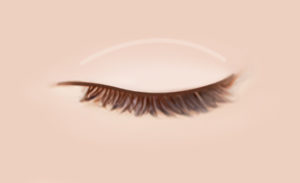
01. Design
Create the double eyelid line that would best suit the patient. -
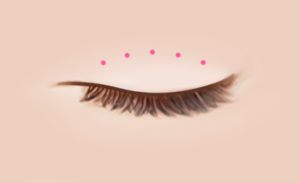
02. Make Openings
Make three to nine micro holes according to the design. -
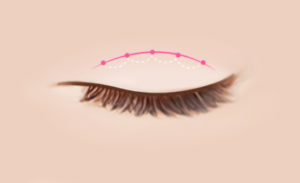
03. Tying Knots
Pass the thread through the three to nine micro holes and tie the knot.
Advantages of CDU’s Non-incision Method
By increasing the number of knots, the 9-Lock Non-incision method lowers the chance of recurrence and results in more natural and attractive double eyelids.
Incision Method
This is the most common surgical method for double eyelids, where the incision is made on the eyelid to remove the appropriate amount of skin, muscle, and connective tissue, before suturing the skin to create the double eyelid.
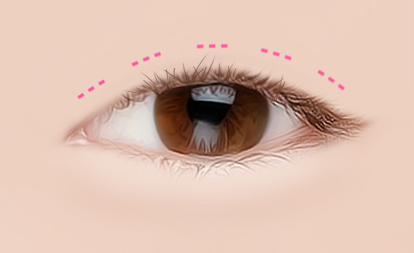
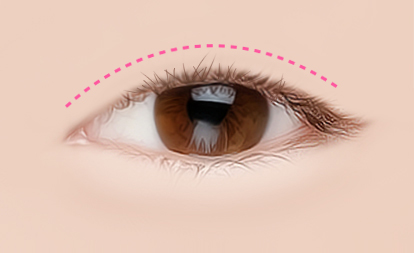
Recommended for:
Strong Mongolian crease lines
Severely droopy eyelids
Surgery after recurrence following non-incision method
Double eyelid surgery without worrying about future recurrence
Thick eyelids
-
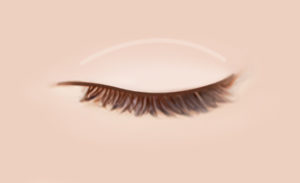
01. Design
Create the double eyelid line that would best suit the patient. -
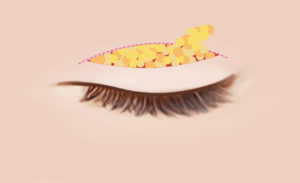
02. Make Incision & Remove Tissue
Make the incision at an appropriate height according to the design and remove any unnecessary tissues. -
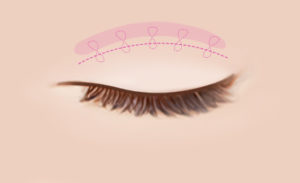
03. Create Double Fold
After removing the tissue, connect the muscles with the eyelid.
Advantages of CDU Incisional method
- Incisional method can be performed on any type of eyes. Regardless of the condition of the eyes, the incisional method can create a natural line with less chance of recurrence.
- Due to CDU’s expertise, you needn’t worry about scars and recurrence. There’s almost zero chance of recurrence.
- This procedure can correct issues with skin, muscles, fat, and the angle of the eyelashes. Therefore, it can be used to correct thick eyelids, eyelashes poking the eyes, etc.
Partial-Incision Method
The partial incision method overcomes the weaknesses of the non-incision method and involves making tiny incisions. The operation rarely leaves scars and removes a certain amount of fat and muscle to produce more distinct crease lines.
Recommended for:
Thick eyelids or excessive fat
Fat or muscle around the eyes to be removed
Fewer scars and less chance of recurrence
No worries about recurrence recurrence
Excessive muscles around the eyes that prevent use of the non-incision method
-
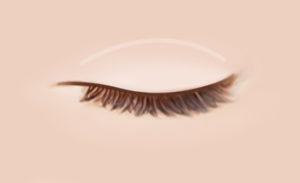
01. Design
Create the double eyelid line that would best suit the patient. -
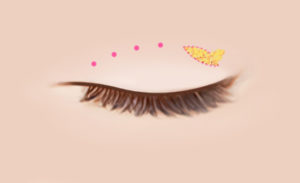
02. Make Incision & Remove Tissue
Make a partial incision at an appropriate height according to the design and remove any unnecessary tissues. -
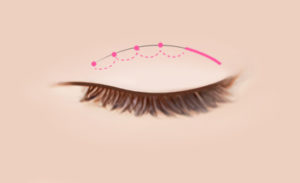
03. Tying Knots
After removing the tissue, connect the muscles with the eyelid.
Advantages of the CDU Partial Incision method
Eyelid lines are natural and there is less swelling and fewer scars.
The partial-incision method clearly defines the outer line through minimum incision and smoothly connects the lines, creating natural eyelids and, like the non-incision method, leaves minimum scarring or swelling.
It can remove unnecessary fat and muscles.
The method removes unnecessary fat and muscles on the eyelids to create natural-looking eyes as well as lifting saggy skin to make more distinct lines.
You can return to your daily life quickly.
The method reduces the length of the recovery because the micro holes produce minimal scarring or swelling, so you can quickly go back to your daily life.
What method is recommended for me?

Ninelock Ptosis Correction + Partial Incision Fat Removal
Ninelock Ptosis Correction
Partial Incision Fat Removal + Ninelock Double Eyelid Surgery
Ninelock or Quick Double Eyelid Surgery
Incisional Double Eyelid Surgery + Prosis Correction
Incisional Double Eyelid Surgery
*Procedures can differ depending on the individual’s physical characteristics. Sometimes a canthoplasty procedure is required at the same time, so we recommend a consultation with a doctor to ensure the right procedure for your condition.
Double Eyelid Types

-
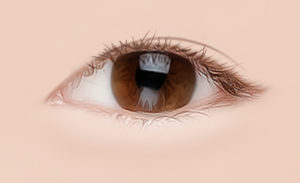
Infold
This is the most common type of double eyelid among Asians so it looks the most natural. This fold is recommended for those who desire natural-looking, smaller double eyelids. -
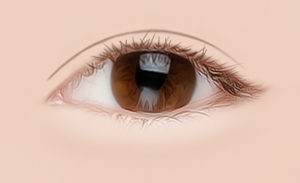
Outfold
This is the most common type of fold among Caucasians. It gives a graceful, active, and westernized appearance. This fold is recommended for those who prefer a higher fold. -
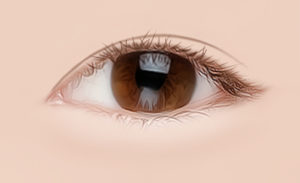
In-out Fold
The in-out fold is a cross between an infold and an outfold. This fold is usually the most appropriate selection for Asians as it gives a natural, yet elegant appearance. Also, by achieving in-outfold, the eyes length can look longer than infold.
Things to consider when deciding fold type

In cases of blepharoptosis, if double eyelid surgery is performed without ptosis correction or if ptosis is not corrected properly, it is inevitable that the eyebrows and forehead will still be used to open the eyes. This results in an unnaturally heightened eyelid fold and unnatural lines, and the eyes look dull and sleepy.
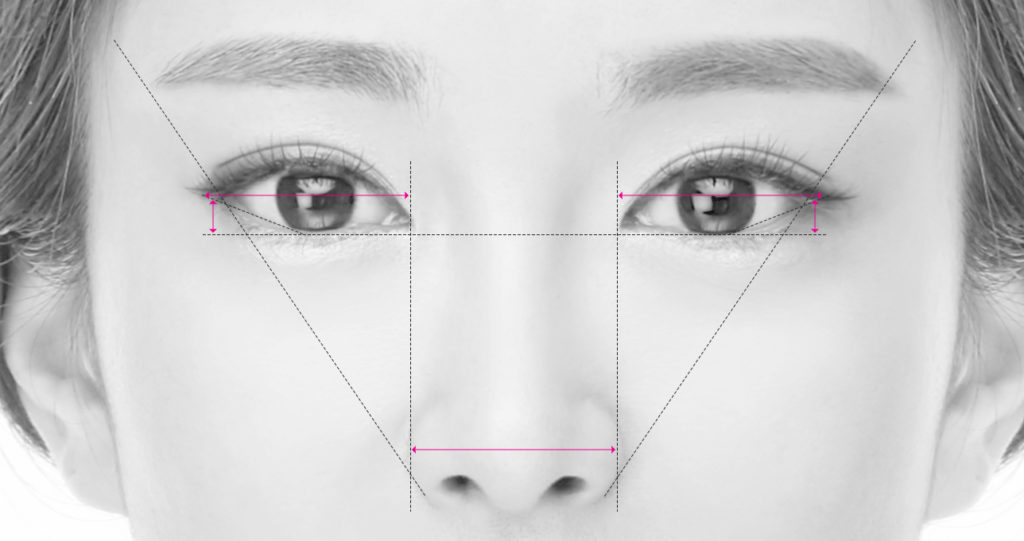
The eyelid skin is too thick for a high fold surgery. A ptosis correction is not performed or is performed improperly.
Where eyes are positioned and if they are well-balanced
Position of the eyes: the ends of the eyes, eyebrows, and nostrils should align at equal angles
If the eyelid skin is thin, a high fold is usually most appropriate. If the skin is thick, a small, lower fold is more appropriate
Length: the ratio of the length of the eyes to the length between the eyes should be close to 1:1
The outer corners of the eyes should be slightly higher up than the inner corners, forming an angle of about 10 degrees
Q&A About Double Eyelid Surgery (Blepharoplasty)

It is not always true that the non-incision method is more natural. Surgical procedures are chosen according to an individual’s eye structure, therefore results may vary. For example, eyes with excess fat can be made to appear bigger and brighter through the incisional method.
The advantage of the non-incisional method is that there is no scarring and a fast recovery. However, if this method is chosen inappropriately, there is a possibility of recurrence or an unsatisfactory result. The incisional method, while requiring a longer recovery period, does not come with these disadvantages. In conclusion, the most important thing is considering one’s own eyes specifically before choosing an appropriate plan.
Yes, it is. However, if someone with strong epicanthic folds over the inner corners of their eyes wants to achieve out-folds through the non-incisional method, it is quite risky as the out-fold may transform into an in-fold over time, due to skin sagging with age.

